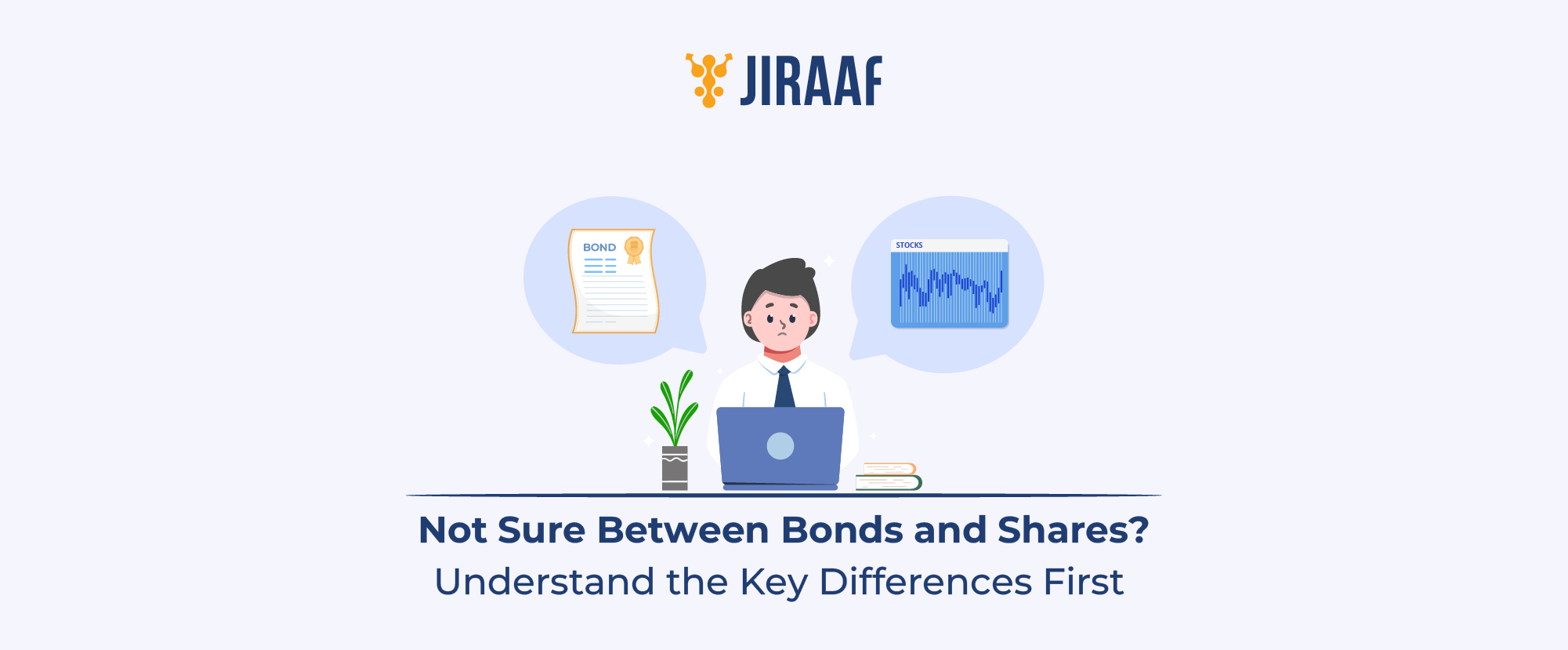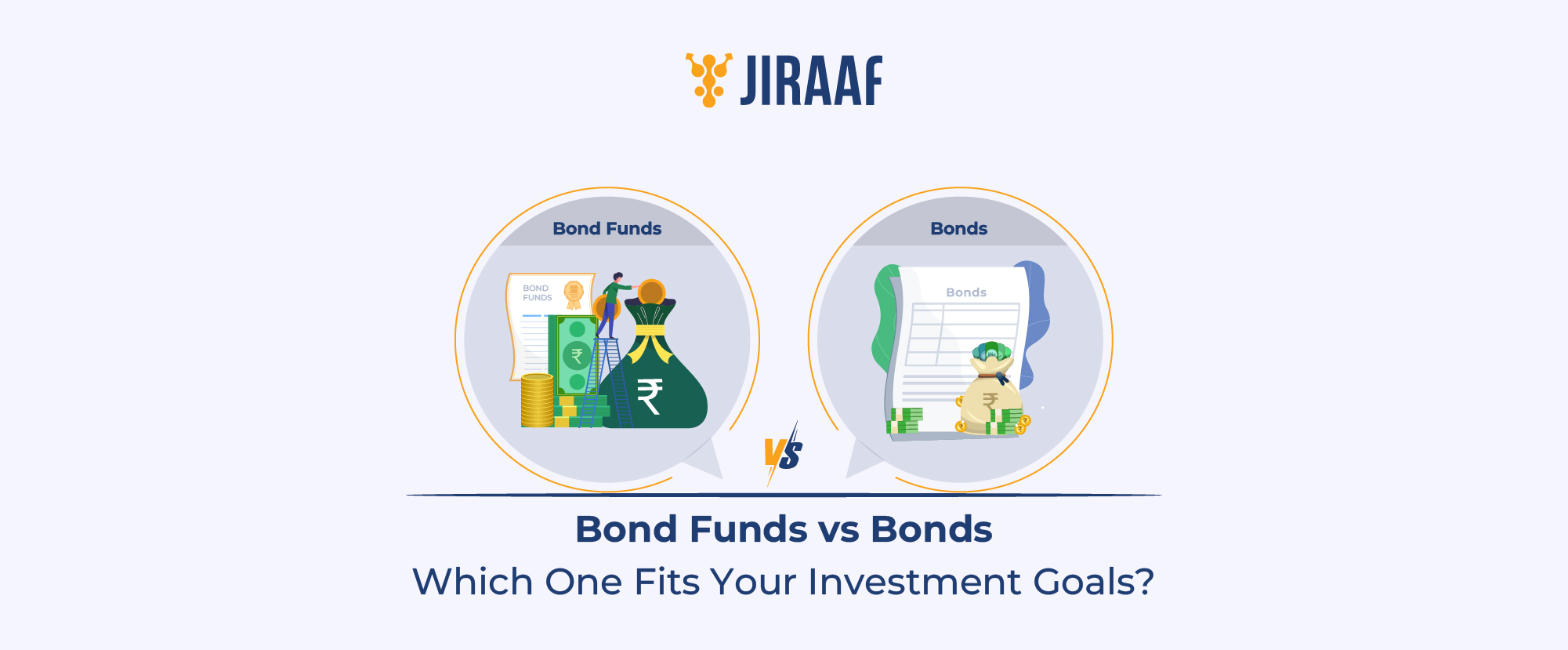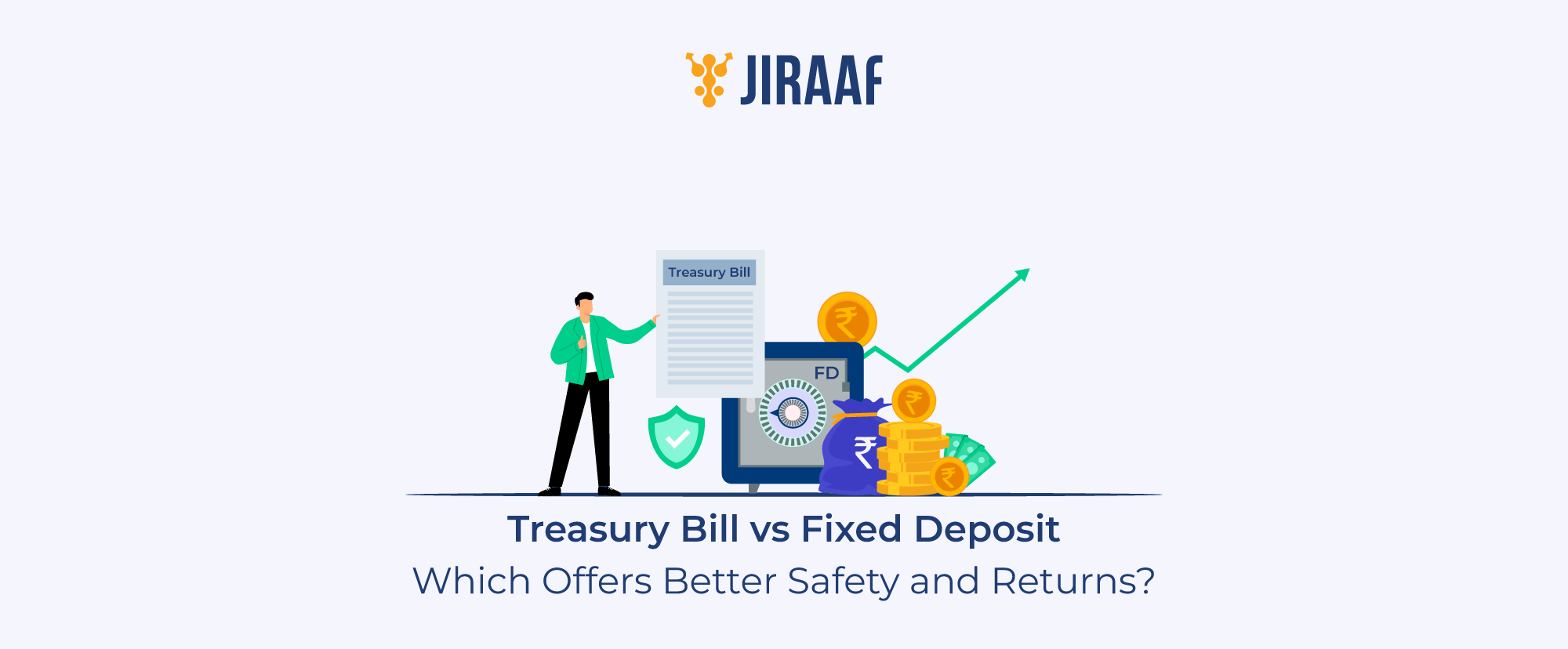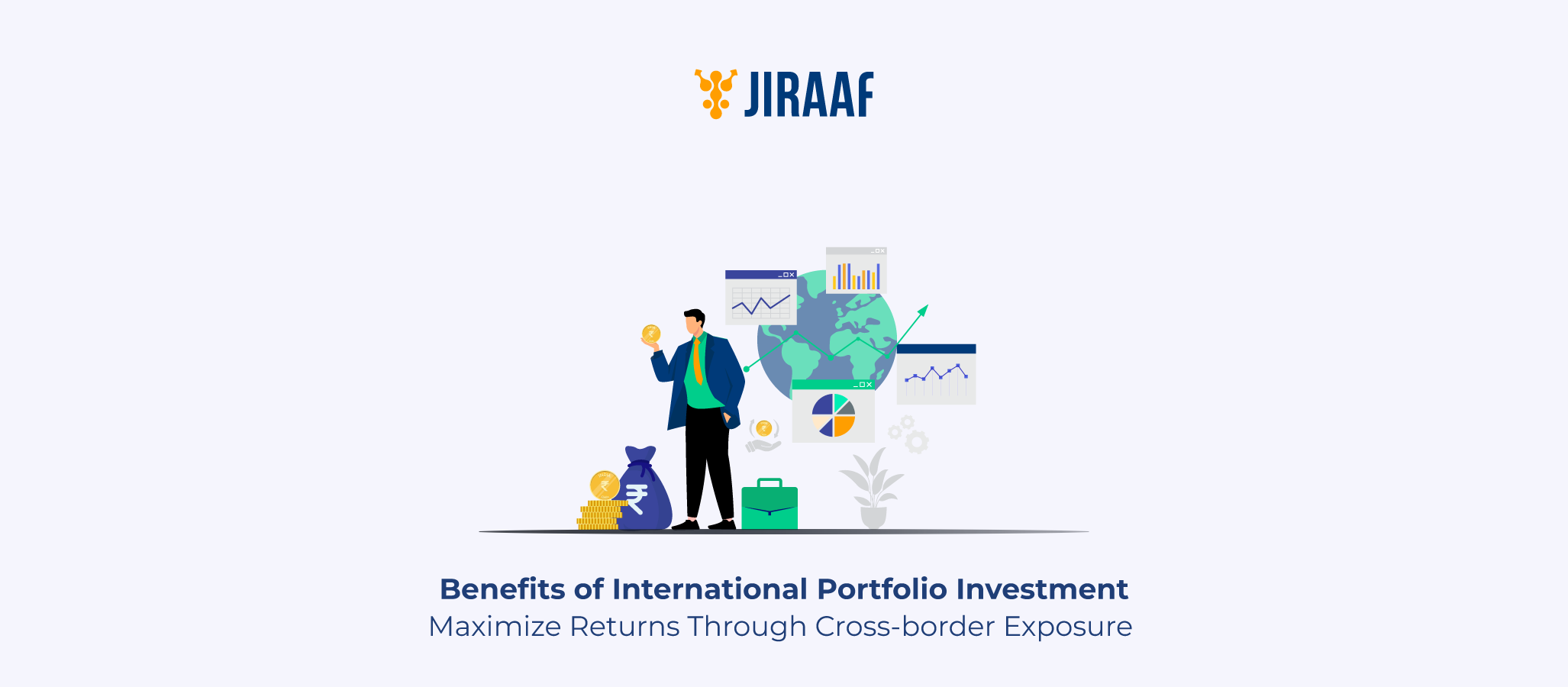Bonds and shares are two different investment instruments, fundamentally contrasting with each other, offering separate benefits to investors. Think of it like this: if you compare investing with building a relationship with the company, then buying shares means that you become a partner in the company’s journey, sharing both its profits and losses. But buying bonds makes you a lender, as you are offering your money in exchange for regular interest and the promise of repayment at maturity.
Both play their own roles in your portfolio. Shares give you potential ownership and the potential to grow your corpus with the company, while bonds give you predictable returns and stability. The key to investing successfully is playing the role of both a partner and a lender, as needed, according to market conditions and your financial goals and risk appetite.
In this blog, we’ll explore how bonds and shares differ, how each fits into your investment goals, and how to strike the right balance between growth and security.
What are Bonds and How Do They Work?
A bond is a debt security that acts as a loan. There are two parties involved—the lender (you) and the borrower (a company, an NBFC, or the government). Simply put, you lend money to a company or the government for business or development purposes, and in return, you receive interest at fixed or floating rates (depending on the bond type) at regular intervals during the bond’s tenure.
Bonds enable borrowers to raise capital to fund their operations without diluting their existing ownership. Each bond is assigned a credit rating, usually ranging from “AAA” to “D”, by reputed agencies such as ICRA, CARE, and India Ratings. These ratings reflect the issuer’s financial health and indicate the level of credit risk you take as an investor.
If you’re looking for a balance between risk and reward, consider investing in investment-grade bonds rated between AAA and BBB-. Bonds below the BBB- category are speculative or junk bonds, and the default rates in these bonds are significantly higher.
While bonds represent lending your money to earn steady interest, shares take you to the other side of the table, where you become a part-owner of the business itself. Let’s have a deeper look.
What are Shares and How Do They Work?
A share, or equity share, represents one unit of ownership in a company. Before a company goes public, its shares are typically held by promoters, founders, and angel investors. Once the company is listed on the stock exchange through an Initial Public Offering (IPO), these shares become available for the general public to buy and sell.
When you invest in shares, you become a shareholder. In other words, you own a proportional stake in the company and share in both its profits and losses. Shareholders are also entitled to receive dividends, which are portions of the company’s profits distributed periodically.
Additionally, they enjoy voting rights in the company’s annual general meetings, thereby having a say in key business decisions. Broadly, shares are classified into two main types—equity shares and preference shares.
Both bonds and shares help you grow your money, but in entirely different ways. Here’s a closer look at what sets them apart.
Key Difference between Bonds and Shares Explained
| Parameter | Bonds | Shares |
| Ownership | Bonds make you a lender to the company or government. You do not own any part of the business. | Shares make you a partial owner of the company, giving you a direct stake in its growth and performance. |
| Control | Bondholders have no control over company decisions or management activities. Their role ends with lending money and receiving interest. | Shareholders have influence over company matters, especially through voting rights and participation in key resolutions. |
| Voting Rights | Bondholders do not have voting rights, as they are creditors, not owners. | Shareholders enjoy voting rights, allowing them to vote on major decisions such as board elections, mergers, and dividends. (Note: Preference shareholders generally do not have voting rights unless their dividends are in arrears) |
Risk and Return Comparison—Bonds Vs Shares
Risk Comparison—Bonds vs Shares
Shares are generally riskier than bonds because most secured bonds are backed by collateral against the principal amount. Certain bonds, such as government bonds, are considered extremely low-risk investments because they are backed by a sovereign guarantee from the government.
In contrast, when you invest in shares, you become a part-owner of the company. This also means that in the event of the company winding up, equity shareholders are the last to be paid, after creditors (general creditors, bondholders and debenture holders) and preference shareholders.
Additionally, shares face daily volatility as multiple market factors, including company earnings, macroeconomic developments, policy changes, and geopolitical events, influence their prices.
Returns Comparison—Bonds vs Shares
As the risk in shares is higher, they tend to offer greater potential returns in the long run. To be more specific, equity markets have the ability to deliver multifold growth when investors stay invested in quality stocks over time.
Additionally, you can generate double-digit returns by investing in broader indexes rather than choosing individual shares. For instance, the Nifty 50, India’s benchmark stock market index, has delivered a compounded annual growth rate (CAGR) of around 12.8% over the past decade.
In comparison, the benchmark for the Indian debt market, the 10-year Government Security (G-sec) yield, currently stands at about 6.4%. Meanwhile, investment-grade corporate bonds typically offer yields ranging between 8% and 15%, depending on the issuer’s credit rating and market conditions.
Final Thoughts: Which is Better for Long-term Investors—Bonds or Shares?
Choosing between bonds and shares isn’t only about risk and return; it also depends on how predictable you want your financial journey to feel. Bonds help with short- to mid-term goals because their cash flows are fixed, making them reliable for planning upcoming expenses or commitments.
Shares, on the other hand, benefit from the company’s own growth engine. As businesses reinvest and expand, shareholders participate in that value creation, which often outpaces fixed debt returns over long horizons.
Instead of choosing one, the real advantage lies in deciding when to use each. Bonds offer clarity and stability, while shares support long-term progress. Aligning both with your timelines creates a resilient, goal-driven portfolio.









